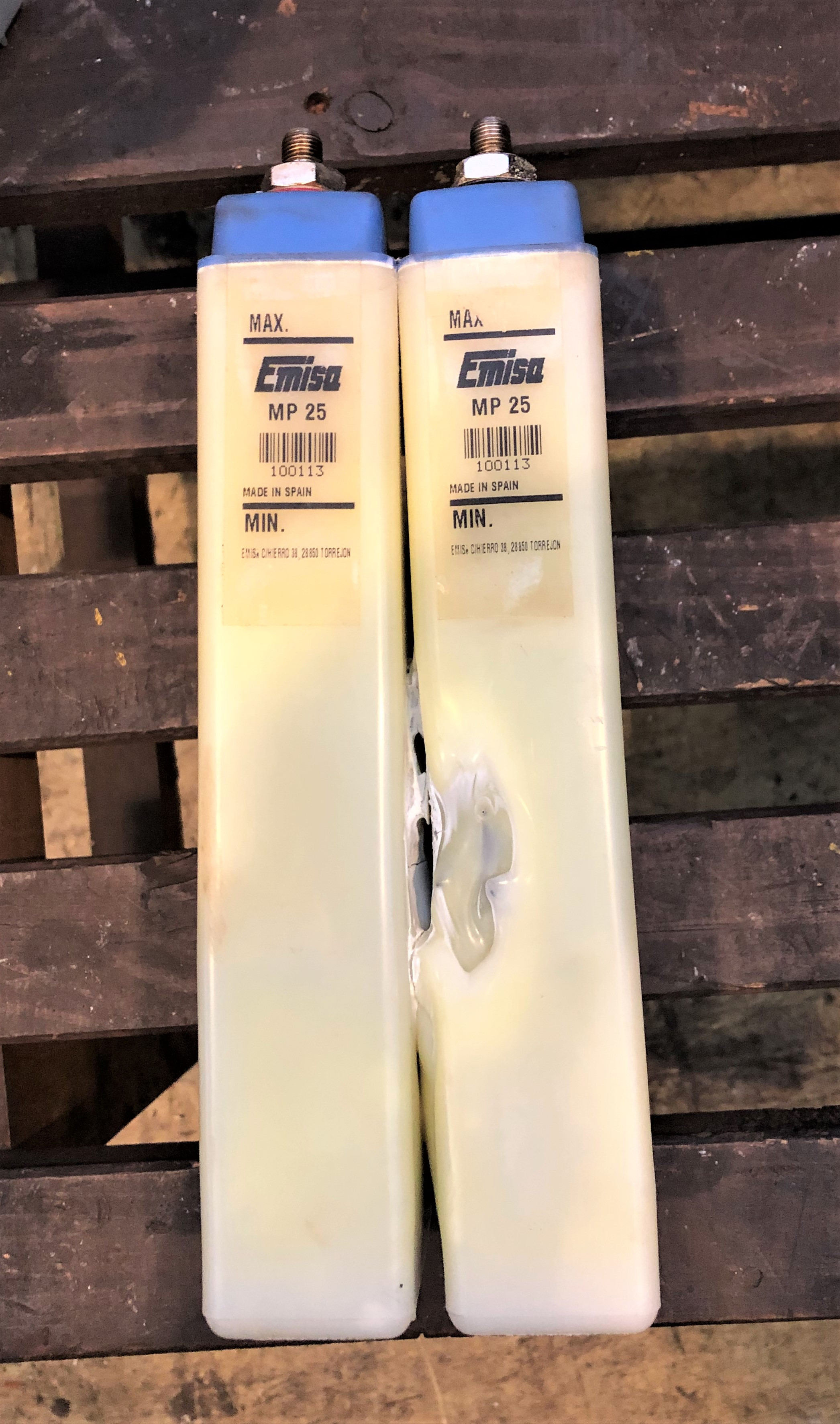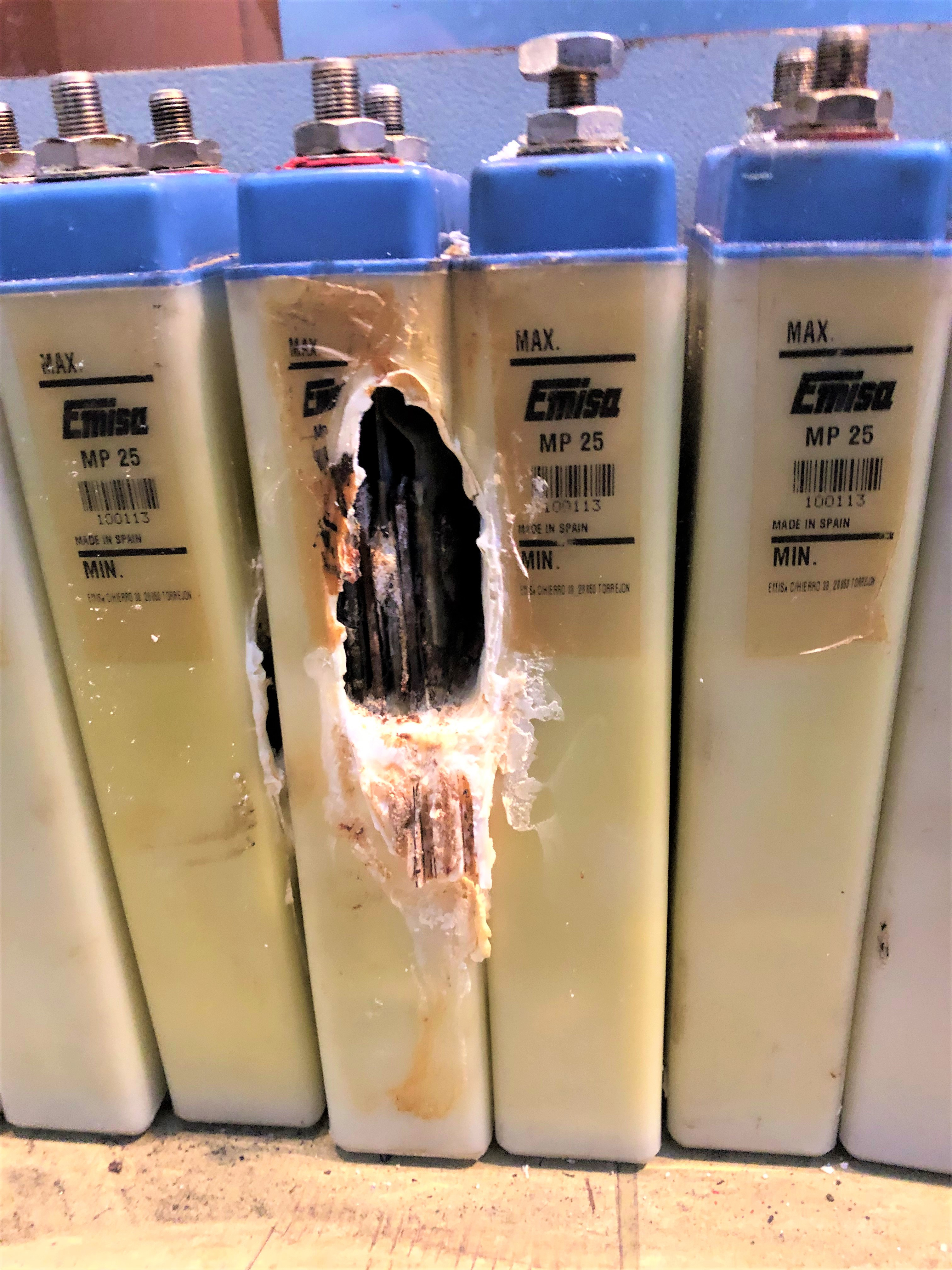Checking the level of the electrolyte periodically is essential to avoid disaster such the one described in this post. This is important even if the equipment has a electrolyte level alarm.
It is essential to control the correct level to:
With the voltage stability provided by actual equipment, in a temperature-controlled environment, conventional battery technology may not require level adjustments in several years, and ultra-low maintenance models may only need one or no adjustment at its design life.
This would only happen if the environmental conditions (room temperature, ventilation...) and electrical conditions (boost & float voltage charge, charge and discharge currents, ripple) are kept within the parameters indicated by the manufacturer. If not, the electrolyte level may decrease.
As the level decreases, the useful surface of the plate also decreases and the heat generated increases. When the heat increases, the evaporation increases and the situation is further exacerbated. This is especially serious in batteries installed on pull-out trays, as they are usually very compact installations where the central batteries cool really bad and also receive the heat of all the surrounding cells.

How you should proceed in case of low electrolyte level
- Check that no ruptures or cracks have occurred due to any external mechanical cause: shock or vibrations. If necessary, take the appropriate measures to avoid it in the future. Replace the damaged cells.
-Revise that the room temperature is under the manufacturer´s conditions, taking into account that the water evaporates at different temperatures depending on the pressure. The higher the temperature, the greater the evaporation is, so the filling intervals should be shortened. Ventilate or refrigerate where appropriate. - -Check that the boost and float charge voltages are within margins.
To solve the problem
• Fill the cells only with distilled water, halfway between the maximum and minimum level marked on the container.
• Put them on charge. Take into account that if the battery has evaporated water from the electrolyte, when adding it, it is necessary to wait for the salts to re- dissolve and the electrolyte to recover the correct density so that the internal resistance of the battery recovers. Load current will increase slowly.
• Check the density after the charge process
• Perform several charge-discharge cycles to recover capacity, and if necessary, make sure in which residual capacity are we. Check levels.
• Check the voltages of each cell (at the end of a discharge cycle if possible)
• Adjust level to the maximum and foresee a next inspection.
How you should not react in case of low electrolyte levels
Do not add electrolyte instead of distilled water, since the water evaporates remaining the salts on the container. If electrolyte is added, the density would never be the same again.

To sum up
Make a simple periodic visual check (every six months or yearly, it depends on the circumstances). We can prevent battery destruction, and the damages related to it, which are usually more expensive than the value of the battery itself.